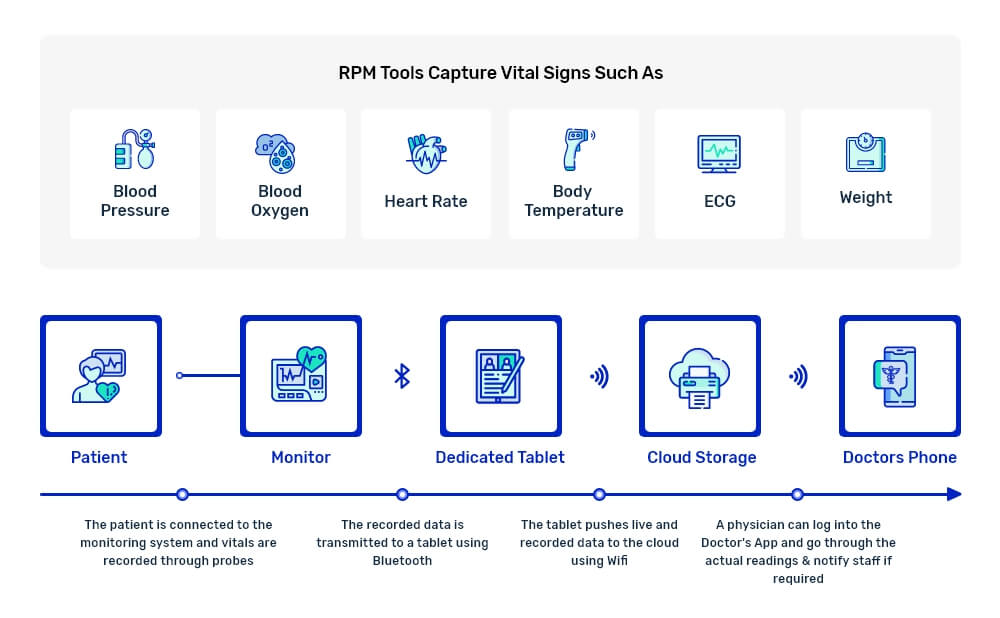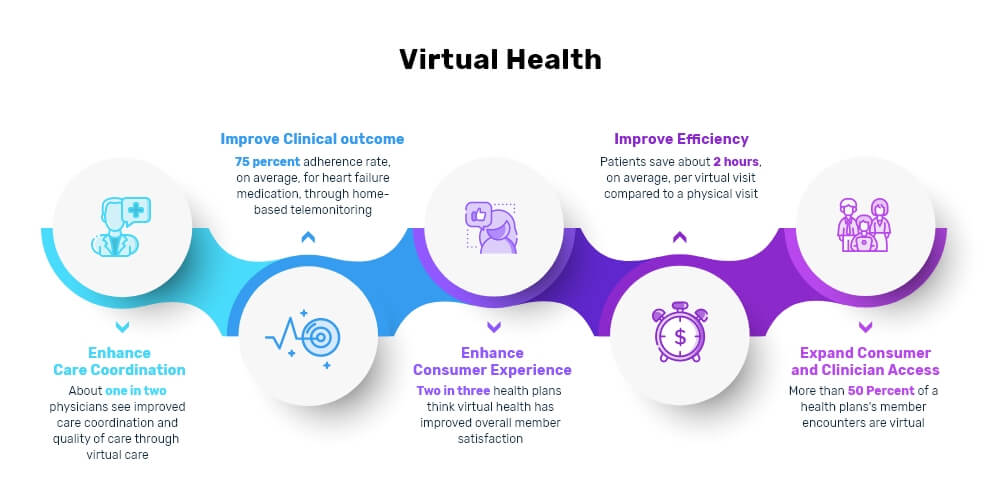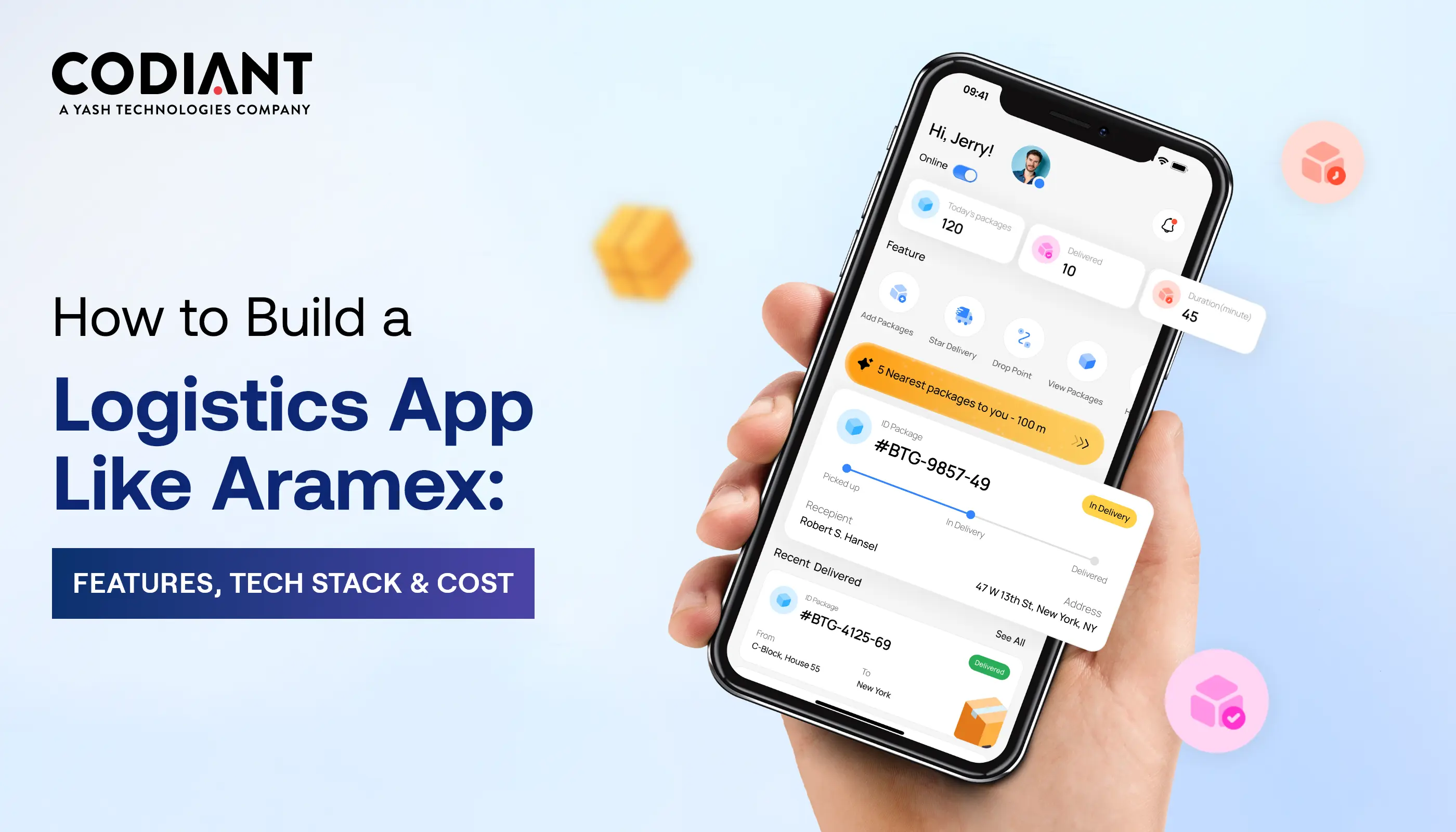How Remote Patient Monitoring is Helping Care Providers to Improve Patient Outcomes?
Table of Contents
Subscribe To Our Newsletter

Now more than ever, US health systems and hospitals are turning to Remote patient monitoring technologies. It is widely helping them eliminate unimportant patient contact and also helping hospitals reduce the burden.
Physicians know it. Not every illness need hospitalization. Patients undergoing vague symptoms such as dizziness, fluctuations in blood pressure, blood oxygen, heart rates, etc. can be effectively treated without hospital admissions.
In such cases, Remote patient monitoring and/or telehealth solutions play a vital role. These technologies enable a continuous uninterrupted connection between patients and caregivers, offer a continuous stream of real-time health data, and save costs to a great extent.
It is convenient, time-saving, patient-centric, and makes healthcare accessible and efficient. But what it is? How does it work? What are its benefits? How does it help Doctors? Let us find it out.
What is Remote Patient Monitoring?
Remote patient monitoring (RPM) is a type of healthcare delivery method that helps doctors use medical devices that tracks and transmits user’s vital signs such as heart rate, ECG, blood pressure, skin temperature, etc. and provide real-time insights to care providers that help them in identifying next steps.
Through RPM and video conferencing solutions, Doctors can monitor patients’ health outside of the clinical walls. Some of the most common examples of RPM devices include digital blood pressure cuffs that measure pulse rate and blood pressures of the patients and enable them to remotely send it to physicians. The other can be an implantable sensor or a smartphone app for real-time diabetes monitoring and management.
How Remote Patient Monitoring Works?
RPM technologies allow providers to send uncritical patients to home with wearable tools that track metrics. The real-time/recorded data is then sent to cloud storage and eventually, Doctors can go through the actual readings and notify staff if required.

How Remote Patient Monitoring Programs Are Beneficial
According to the latest trends by Spyglass Consulting, 88% of healthcare providers have invested in or are evaluating remote patient monitoring technologies to support high risk, chronically ill patients at risk for hospital admission.
There are even more benefits of remote patients monitoring that is helping to improve patients’ outcome, gain economic benefits, and provide peace of mind. Let’s understand in detail.
1. Helps in Delivering Convenient and Quality Care
The PewResearchCenter estimates that 92 percent of Americans have cell phones, and 45 percent have access to a tablet computing device. This type of familiarity with smartphones and technology make people comfortable and increases the likelihood of patient engagement.
Embracing an effective RPM can help in improving quality of care as when people are more engaged for their health, they’re more likely to adopt it in daily practice—this in turn, can help providers gain positive benefits in health care.
2. Helps In Preventing Hospital Readmissions
“A KLAS Research Report surveyed 25 Healthcare organizations that have deployed remote patient monitoring tools have witnessed a 38% reduction in hospital readmissions.” Patients with non-acute conditions can simply apply a bedside monitoring device depending on their health requirement and that device can monitor the patients’ vital signs and send patients’ charts and notifications to the provider’s phone or system.
This virtual health monitoring further aids in providing intensive care beds, staff supplies, and other resources to those in need.
3. Improved Patient Satisfaction
“Reports says, RPM tools have helped in 25% improvement in patient satisfaction rate”. The in-home monitoring capabilities provided by RPM solutions improve patient engagement and helps in better management of chronic diseases. Patients are able to regularly contact Doctors or stay in their touch, easily adhere to treatment and care plans, follow medications, and reduce their dependency to travel into the hospitals for vague issues; thus saving their time and travel expenses.
Codiant’s Remote Patient Monitoring Solutions enable care providers in the USA to improve patient engagement by helping them track daily health activities as outlined under their care plan via their personal device.
4. Helps In Reduction Of Costs
“As per a KLAS Research report, which surveyed 25 healthcare organizations found that 17% of hospitals and healthcare organizations running RPM programs cited significant cost reductions”. RPM’s effectiveness, proactive nature, and ability to monitor virtually has increased staff’s efficiency, provided high-quality care to patients, and addressed the gaps in health care. This in turn, has helped in cutting expenses hugely as providers can now focus on patients more rather than spending time on tracking down each patient’s data and other administrative work.
We think remote patient monitoring would be a near-default option in the future of healthcare delivery. Along with better patient engagement and experience, the technology when combined with telemedicine and electronic health records (EHRs) will drive value across all the five key areas including:

Role Played By Remote Monitoring During the Pandemic
Statistics Findings As per the Harvard Business Review:
- The U.S. Centers for Medicare and Medicaid Services expanded Medicare coverage for remote patient monitoring to include patients with acute conditions and new patients as well as existing patients.
- The U.S. Food and Drug Administration issued a new policy allowing certain devices (FDA-approved non-invasive devices used to monitor vital signs) to be used in remote settings.
- Healthcare organizations such as Mount Sinai Health System in New York City, University Hospitals in Cleveland, Ohio, St. Luke’s University Health Network in Bethlehem, Pennsylvania, and Providence St. Joseph Health in Renton, Washington, is using remote patient monitoring to care for patients during the COVID-19 pandemic.
How Telemedicine App Is Playing A Huge Role In Remote Monitoring for the Physicians in the USA?
Telemedicine app solutions are acting as a best-in-class online video conferencing solution helping care providers in treating the patients outside the traditional clinical settings with full security, ease, and convenience through online video calls, text messages, ePrescriptions, medical data sharing, and online appointment scheduling.

- Facilitating Rapid Stroke Diagnosis and Treatment
- A Significant Reduction In Hospital Readmission Rates
- Solving Healthcare Challenges in Rural Areas
- Simplifying Acute, Chronic Care and Dermatology Consultations
Read More: How USA Physicians, Clinics, and Hospitals Are Benefiting from Telemedicine Program?
The Bottom Line:
COVID-19 has created an open opportunity to accelerate the adoption of virtual care with the support of technologies like remote patient monitoring and telemedicine app solutions. We encourage healthcare organizations, hospitals, and clinical chains to embrace the power of telehealth programs and take the value-based care delivery model to the next level.
How Codiant Can Help?
Codiant designs and develops a custom telemedicine platform adaptable to the needs of clinics, hospital chains, and healthcare enterprises. Our telemedicine app development solutions integrate with your EHR to create better user experiences. The software utilizes online appointment booking, scheduling, cloud-based online video calling, video conferencing, screen sharing and whiteboards to streamline doctor-patient communication.
We also help organizations with the readymade telemedicine platform ‘TeleDocto’. It is a white-label, open-to-customization, ready-to-deploy telemedicine solution with a range of features.
Featured Blogs
Read our thoughts and insights on the latest tech and business trends
How to Integrate AI in Recruitment and Cut Hiring Time by 70%
- November 13, 2025
- Artificial Intelligence
Recruiting teams face a clear operational challenge: too much manual work and not enough qualified talent reaching the finish line. Even with modern ATS systems, most hiring workflows still depend on human-driven screening, coordination, and... Read more
How to Build AI Agents That Can Speed Up Your Work and Reduce Other Expenses
- November 10, 2025
- Artificial Intelligence
Businesses today are looking for faster ways to work and smarter tools that cut costs. That’s why AI agents are quickly becoming a key investment for companies of all sizes. These autonomous systems can perform... Read more
How to Build a Logistics and Transportation App Like Aramex?
- November 6, 2025
- Logistics & Transportation
In a Nutshell: A logistics app like Aramex helps businesses manage deliveries, track shipments, and serve customers better. Technology is now needed in logistics because customers want fast delivery and real-time tracking. A logistics app... Read more





